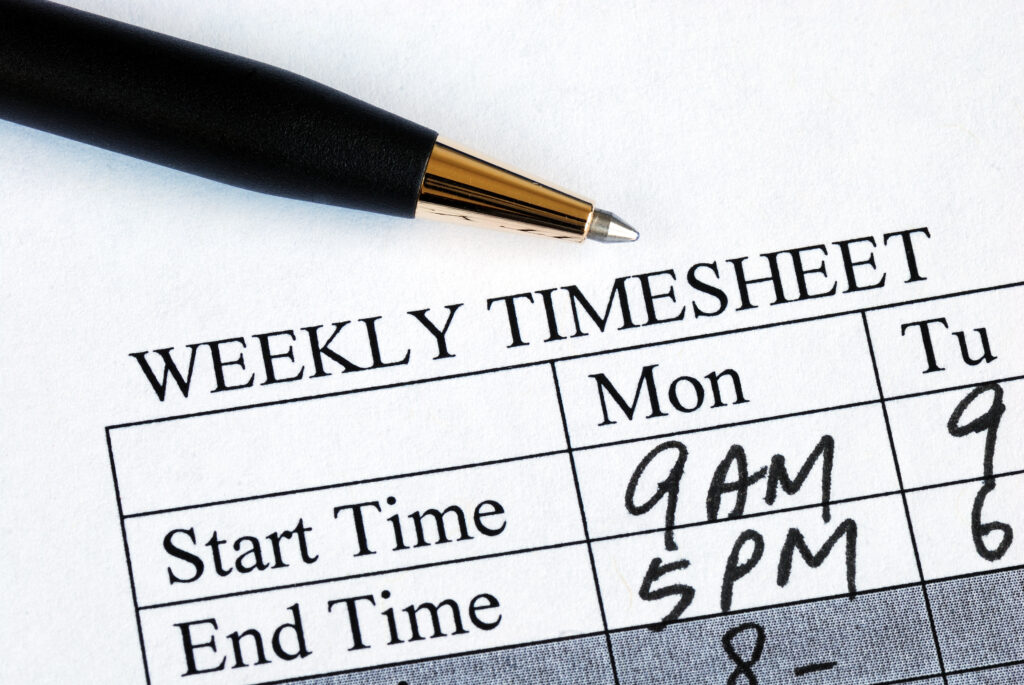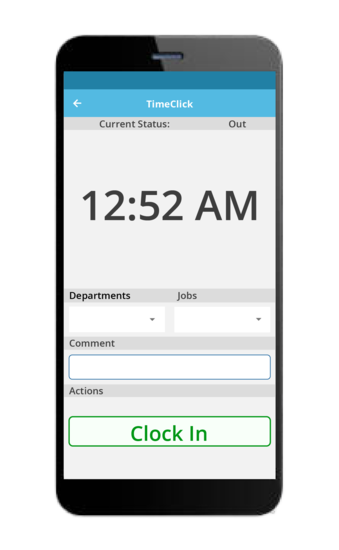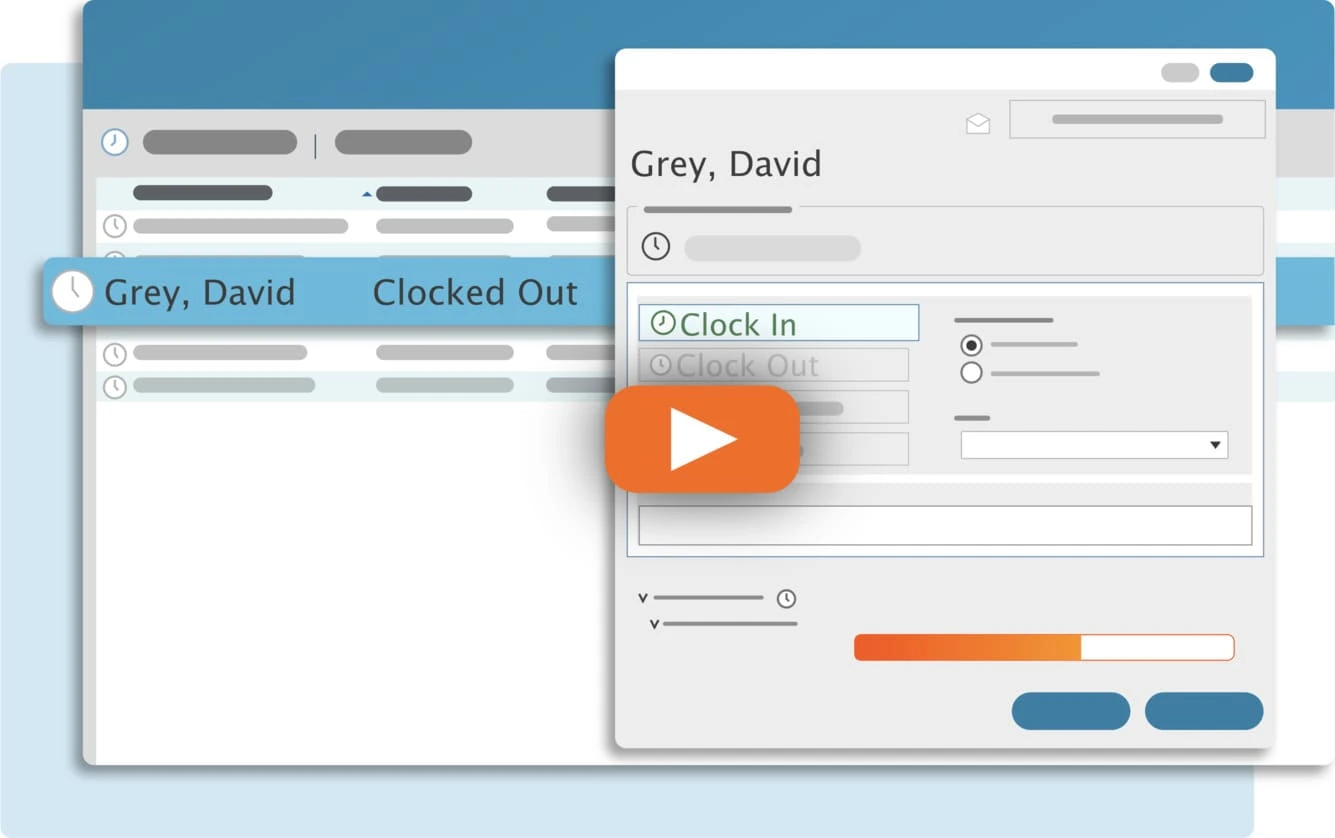Let’s say you decided to do an annual cleaning of your home and you felt something wadded up in a jacket pocket. You take the jacket, open it up and you feel folded bills inside.
Then, let’s say you dumped all of the cash out of the pocket and counted it thoroughly. The cash totals up to $900. What would you do with the money?
This isn’t necessarily just a fantasy. Though the practice has existed for centuries, paper time tracking is not your only option and may not be the best option, either. Let’s dive into why.
Paper Tracking Origins
For thousands of years, humans have used paper to record important information. Sources may argue on the exact origins, but people have kept time for a similar amount of time.
For most of human history, paper represented the only option for keeping and tracking time. The most advanced technology for verifying the accuracy of time reports was the human eyeball.
Overseers and supervisors relied on themselves to make sure workers received fair and accurate compensation. Well, they were supposed to.
The failure of people to keep themselves accountable led to the rise of labor and time tracking laws that require employers today to accurately keep time records.
Even today with modern advancements, however, many people still keep to the same old conventions.
What does Paper Time Tracking Look Like?
Paper time tracking follows one of two popular methods – recording times by hand or using a tool that stamps times on a pre-printed card.
The first option can range widely, from scraps of paper in a notebook used to quickly jot down employee clock in/clock out times to printed spreadsheets that organize more information.
The second option usually involves employees having assigned cards that they use to punch in when they walk in to work and to punch out when they leave. Machines like this usually have built-in clocks that stamp the exact time of employee punches.
Why Paper Time Tracking?
As the saying goes, “if it ain’t broke, don’t fix it.” Paper time tracking has stood the test of time for generations and generations.
People favor paper time tracking for clear and simple reasons.
Ease of Use
People learn to read and write as a basic skill. No one needs special knowledge or understanding to write when they started working and when they finished.
Paper time tracking is easy. Employers and employees alike do not need any sort of training to know how to track time using paper.
Ease of Access
Most, if not all, businesses have paper. Employers favor this option for the fact that paper time tracking can start by printing simple spreadsheet arrangements.
This idea can also lead people to believe that paper time tracking represents the cheapest of all time tracking methods.

Why Not Paper Time Tracking?
To refer to the same saying, advancements in software demonstrate that paper time tracking may, in fact, be quite “broke” of a system. What may seem convenient and of low cost could actually cost you big money in the long run.
See, to make time tracking easier, laws allow companies to round up to fifteen minutes of time for reporting purposes.
While this allowance may make time keeping easier and more convenient, you could lose thousands of dollars each year due to this very problem.
Let’s explore the disadvantages of paper time tracking.
Honor System
Accurate paper time tracking assumes employees will always record their times accurately.
Some may pride themselves on the adherence to an “honor system” like paper time tracking. Employers trust employees to work and report their work honestly while employers compensate them fairly.
Breaches of an honor system can happen whether employees intend to lie or not.
Take an employee who arrived just after the bell at 8:02 AM. Their schedule starts at 8:00 so they record 8:00 as their start time on their paper timecard.
Say another employee takes lunch at 12:00 PM. Their lunch ends at 1:00 PM, but they chat with another employee until 1:07 PM. They just record 1:00 PM on their timecard.
These instances may seem more intentional. A more likely scenario can involve employees who forgot to record their times on their paper timecard.
People will not remember with exact detail the times they clocked in and out, leading to a greater potential for incorrect reporting.
Inefficiency
Paper is simple. You write on it and, unless erased, your recorded information remains.
Paper also does not have special functions that allow you to sort information or filter what you see.
In previous examples of inaccurate time reporting, paper timecards will force you to sit down and comb through the information yourself.
If you have concerns that an employee regularly steals time, you will have to sit down and verify the information yourself. This process eats up valuable time you could spend on more important tasks.
Even in the ideal world where employees never lie on their timecards, paper still reduces efficiency. You must gather up employee timecards for payroll and examine all items by hand and eye.
This scenario doesn’t even explore the probable event employees lose or damage their paper timecards. Even small drops of water, creases, or smudges can affect legibility, wasting more of your time to verify the information.

A Cost Evaluation
Even with all of these problems, thousands of businesses today still choose paper time tracking. Why? Again, because paper is simple.
In the end, the downfalls of paper time tracking may initially seem like marginal losses of time. People may not mind spending time poring over paper timecards.
Reality suggests you may lose a lot more than an hour or two each week.
Let’s refer back to the earlier examples. Let’s say the lunch chatting employee overall records fifteen minutes of time they say they worked, but actually did not work. Let’s also say they make $10 an hour.
For the average month, that employee costs you an extra $55 of lost worktime. Over a year, the employee costs $660.
You may say, “Big deal. Fifty bucks a month costs less than other fancy time tracking tools.”
Consider the compounding effects when I emphasize that this is lost money from one employee.
If all of your employees make $10 an hour, then two employees doing this costs $1320 every year.
If you have one employee doing this that makes $15 an hour, the first year of inaccurate reports will cost $990 instead of $660.
Sure, paper does not cost much and is readily available. In the long run, however, paper can cost you thousands in stolen time every year.
Simplify Time Tracking with TimeClick!
Download our free trial—simple, secure, offline tracking, no fluff.

Exploring Solutions
At this point, you may wonder what alternatives exist to paper time tracking. A quick Google search may overwhelm you with an ocean of different options.
The possible solutions could range from cloud-based time tracking software, web-based applications, mobile applications, and a whole host of other programs.
As with any other tool you purchase for your business, you need to evaluate the possibilities based on your needs.
Business Scope
Companies with thousands of employees may prioritize the centralization of employee time tracking. This need may push such a company to choose cloud-based software that offers a vast range of features for a recurring monthly cost.
How many employees do you have? How often do they work? Do they commute to one central location?
Depending on your responses to these questions, cloud-based software may not fix your problems at a cost that matches your situation. Cloud-based time tracking programs often charge you for each employee every month and can quickly rack up huge recurring costs.
Differences in Operation
A construction company that dispatches teams to distant work sites needs to track employee time differently from a clothing store where employees organize products and operate cash registers.
Do your employees travel while working? Do they work away from your main office? Do you allow for remote work?
These questions could necessitate certain features from a time tracking tool. Construction companies may favor programs with mobile functionality and geolocation. On the other hand, a restaurant may want employees to use an on-site kiosk.
Employee Pay/Work Structure
You may have employees that earn by the hour and others that earn a flat salary. These characteristics also play important roles in the decision-making process.
Do you want to track salaried employees’ time for accountability? Do employees transition between different departments or tasks?
Your answers to these questions can help eliminate tools that do not allow for you to organize and customize employee time reports.
Advantages of Software
Each of the considerations we mentioned dive into the possibilities with time tracking software. Let’s establish this fact first: software is not hard and keeps getting easier to use.
One of the most important principles for all software companies involves the user experience. Companies continually re-evaluate and change their software products to make their tools easier and easier to use.
To put this in perspective, many time tracking programs require employees to hit one button that says “Clock In” and another that says “Clock Out.”
You do not have to know or use any bit of programming code. Often you don’t even have to navigate confusing menus and configure a bunch of dialog windows to get started.
Software offers a list of other advantages as well.

Improved Protection and Transfer of Information
You can forget about having to hunt for lost employee timecards. Forget about trying to decipher an employee’s atrocious handwriting or trying to tape torn pieces of paper. Forget about spilling coffee or water and ruining timecards.
With information stored digitally, your records will remain until you decide to delete them. You can even retrieve information from damaged or non-operational computers.
At the same time, you can easily export and send information to your bookkeeper or accountant for payroll. Some programs even integrate with accounting programs like QuickBooks in direct information transfers.
Greater Accountability
Without having to pore over every employee’s handwritten record, software allows you to easily sort through and filter your records.
Did an employee clock in late? How many times? Do they seem to clock in late every Tuesday?
You can actually answer these and other questions with ease and address problems where they arise in a quick and efficient manner.
Some programs even allow you to require approval for employees that attempt to change their clock in/clock out times.
Still Unsure?
Hundreds, perhaps thousands, of different time tracking programs exist. Rather than listing each and every option and assessing their merits, let’s take a step back.
If you find anything about paper time tracking relevant, we have a place to start.
You may not want to think or worry about time tracking. You probably do not want to deal with complicated computer systems. Cutting costs may sit at the top of your priorities list.
If these statements describe you to any degree, let’s explore a possible solution that costs you nothing to try out.
With no strings attached, you can try out TimeClick for free for fifteen days.
What is TimeClick? It’s a program that tracks time and allows for differentiated tracking by job and department. It manages paid time off, vacation, and sick time for you. It even has a mobile app that allows employees to clock in from their phones.
TimeClick keeps things simple. Employees click a “Clock In” button when they start and click a “Clock Out” button when done with work.
You do not have to deal with a web-based application, so employees can use the same computer for time tracking even with Internet outages.
On your end, TimeClick organizes everything for you. The program generates preset reports to show you anything and everything related to employee time.
The best part: TimeClick is not a recurring charge. You pay once and you keep TimeClick forever.
In our previous example, an employee reporting the wrong times could cost you anywhere from $600 to nearly $1000 every year. Most licenses for TimeClick cost less than $600.
Again, you can try all this out for free. If you have any questions about TimeClick or about paper time tracking in general, reach out to us at (453) 753-4102 or email us at sales@timeclick.com.
Ready to streamline your employee time tracking, boost productivity, and simplify payroll? Sign up for your FREE 14-day trial today and see how TimeClick can transform your business!
Start your FREE TimeClick Trial Today.

